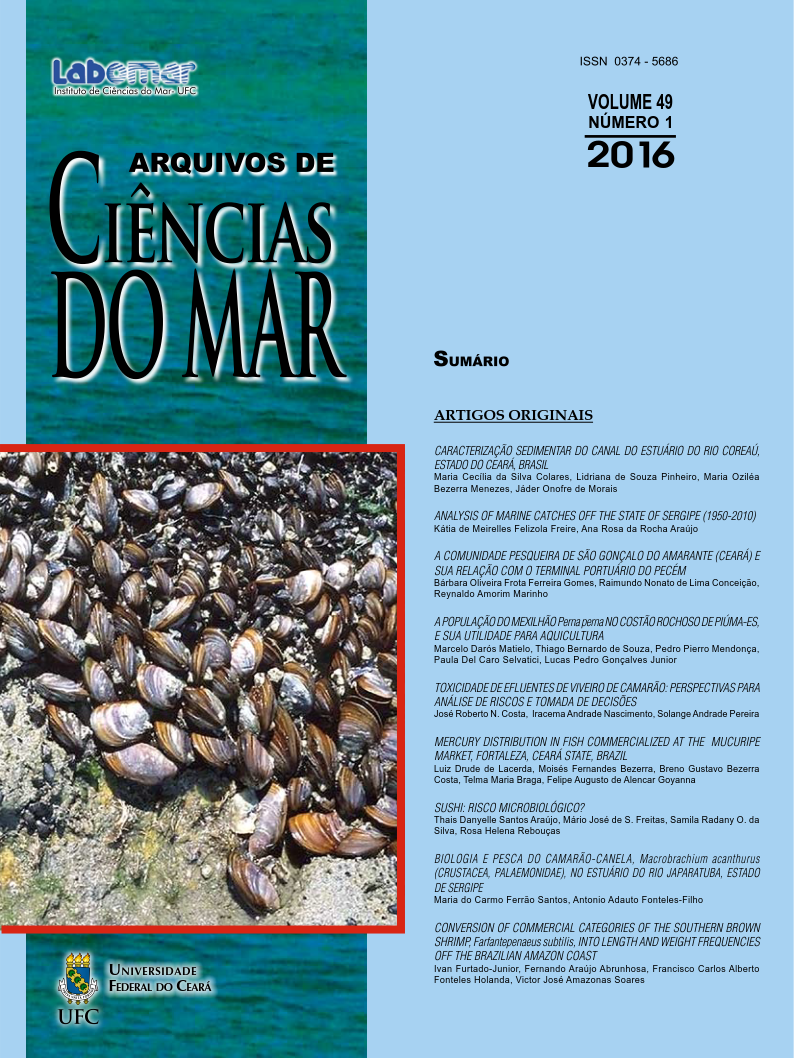Characterization of the mussel Perna perna population on the rocky shore of Piúma, Espírito Santo State, and its use for aquaculture
DOI:
https://doi.org/10.32360/acmar.v49i1.6168Keywords:
mussel, Perna perna, population, aquaculture, rocky shore.Abstract
Mussel farming is an alternative activity exerted by Brazilian families so as to reduce the extraction and pressure on natural mussel populations. The objective of this investigation was to characterize the distribution of the different seed sizes of the mussel Perna perna on a rocky shore of Piúma, Espírito Santo State and to evaluate its use in aquaculture projects. The study was conducted at Instituto Federal do Espírito Santo–Campus de Piúma, where 16 samples were analyzed according to four treatments: T1 - origin of the seeds in the shore; T2 - 1 meter below the origin; T3 – 2 meters below; T4 - 3 meters below, with four replications in a completely randomized design. Heterogeneity in vertical distribution of the amount of seeds in the ranges 1.5 - 2.4 cm as well as 1.5 - 2.4 and 3.6 - 4.5 cm by weight were observed to occur through the Shannon-Wiener test. The species by-catch has displayed heterogeneity characteristics.
Downloads
Published
Issue
Section
License
1. Proposta de Política para Periódicos de Acesso Livre
Autores que publicam nesta revista concordam com os seguintes termos:
- Autores mantém os direitos autorais e concedem à revista o direito de primeira publicação, com o trabalho simultaneamente licenciado sob a Licença Creative Commons Attribution que permite o compartilhamento do trabalho com reconhecimento da autoria e publicação inicial nesta revista.
- Autores têm autorização para assumir contratos adicionais separadamente, para distribuição não-exclusiva da versão do trabalho publicada nesta revista (ex.: publicar em repositório institucional ou como capítulo de livro), com reconhecimento de autoria e publicação inicial nesta revista.
- Autores têm permissão e são estimulados a publicar e distribuir seu trabalho online (ex.: em repositórios institucionais ou na sua página pessoal) a qualquer ponto antes ou durante o processo editorial, já que isso pode gerar alterações produtivas, bem como aumentar o impacto e a citação do trabalho publicado (Veja O Efeito do Acesso Livre).

